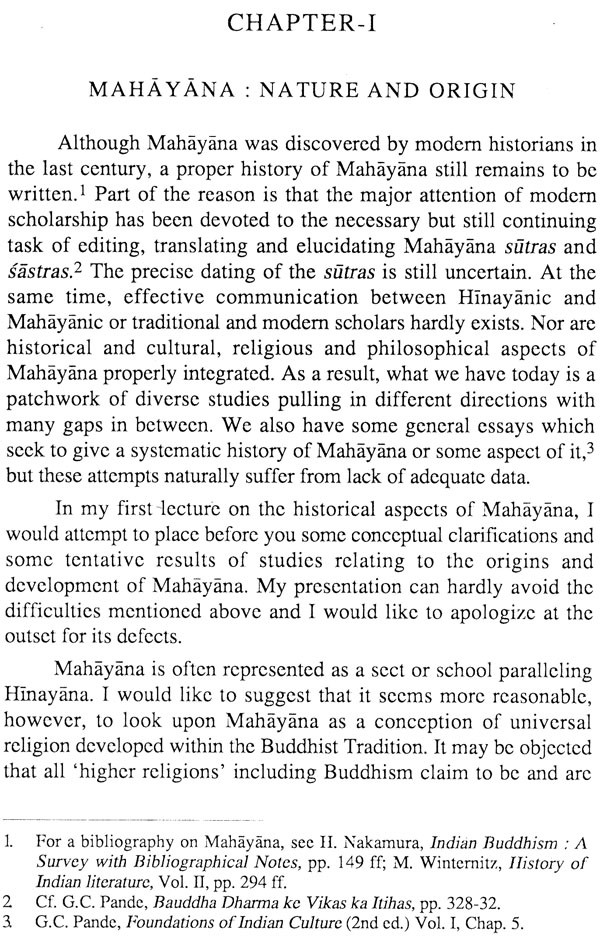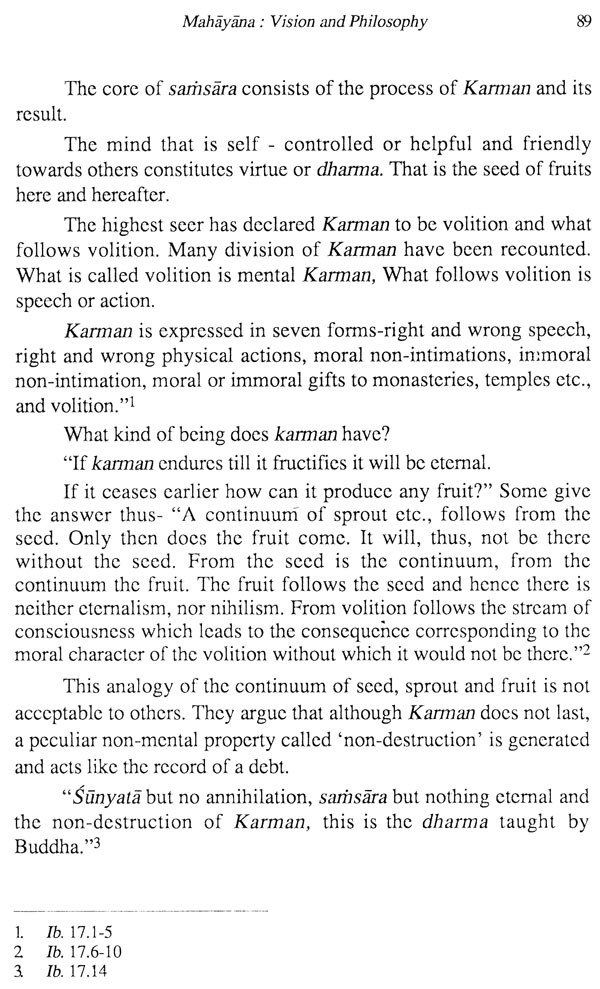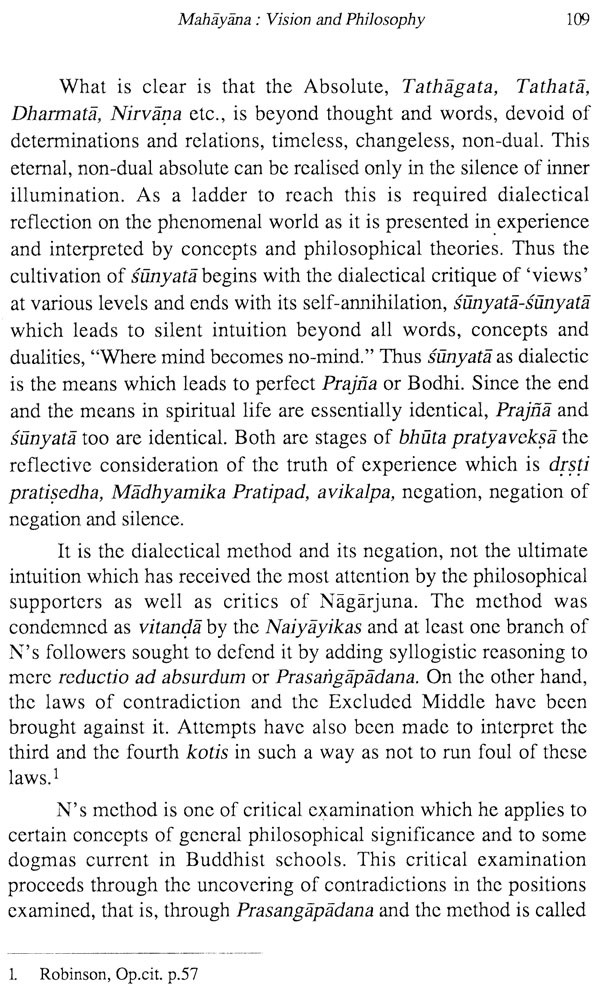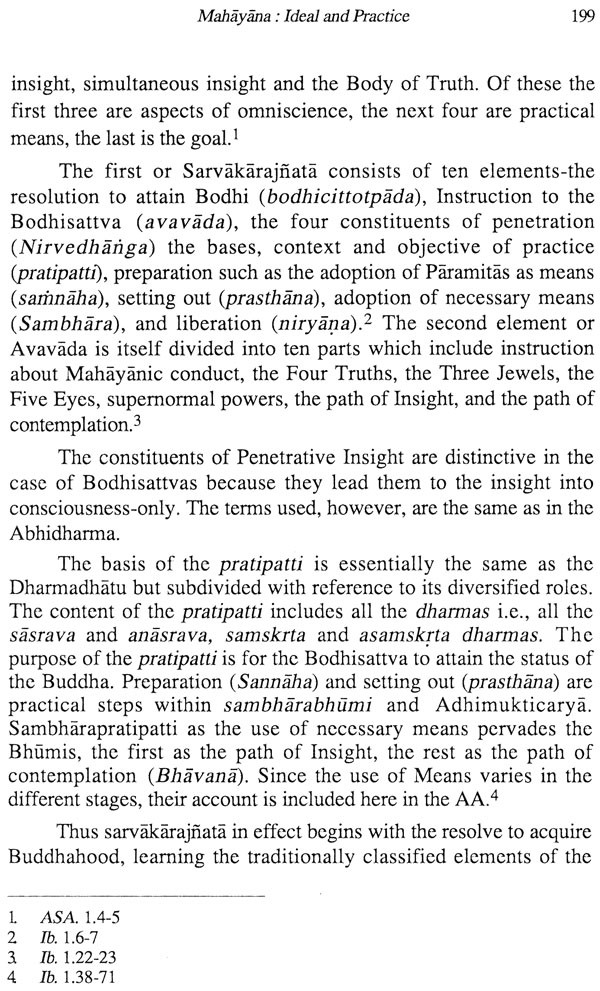
Studies in Mahayana
Book Specification
| Item Code: | UAW883 |
| Author: | G.C. Pande |
| Publisher: | Central University of Tibetan Studies Sarnath (Varanasi) |
| Language: | English |
| Edition: | 2010 |
| ISBN: | 9788190014984 |
| Pages: | 216 |
| Cover: | PAPERBACK |
| Other Details | 9.00 X 6.00 inch |
| Weight | 310 gm |
Book Description
Although my systematic interest in Mahayana goes back to 1948 when I studied some Chinese Buddhist texts with my friend Dr W. Pa-Chow, it was only in 19X5 that I conceived the project of a distinct monograph on Mahayana when the Indian Council of Historical Research honoured me with the award of a National Fellowship. It was, however, the long-pending invitation of my esteemed friend Ven. Dr. S. Rinpoche to me to deliver the Lalmani Joshi Memorial Lectures and the excellent library of his Institute that enabled me to finalize some ideas about Mahayana over which I had been meditating for some time. The present work represents the expanded form of the lectures which I delivered at the Central Institute of Higher Tibetan Studies, Sarnath, in February 1992.
Mahayana has been generally represented by modern historians as a late form of Buddhism which is held to have replaced the austere moral teachings of the founder by an exuberant devotional faith having a virtual pantheon of ‘gods’ and images, myths and ritual. At the same time, some philosophers have viewed Mahayana as a group of mutually inconsistent metaphysical systems which they have sought to interpret and discuss in the light of some modern ideas. The present work, however, seeks to argue that Mahayana should be understood as the Buddhist notion of universal religion. Far from being a late distortion, it is essentially a continuation of some aspects of original Buddhism which should not be confused with Hinayana, itself a later interpretation of original Buddhism. The extant Mahayana sutras, however, arc later than the original cononical texts of Vinaya and Dharma which arc now found only in a fragmentary condition. These Mahayana sutras consequently reflect the cultural image of a later age and produce a mixed historical impression. Nevertheless, their spiritual continuity with the original teachings of Buddha may be seen by a close study of the older canonical fragments.
A proper understanding of Mahayanic philosophical schools requires that they should be viewed not only in the universal perspective of abstract logic but also in the concrete context of spiritual practice and experience in which their basic terms and assumptions acquire distinctive meaning. Thus samsara and nirvana, Buddha and prajnaparamita are terms which belong primarily to the religious context of salvation. At the same time they stand behind the concepts of samvrti and paramartha, pramana and jnana. The attempt to reconcile empirical truth with religious ideals had led Hinayanic schools perilously near positivistic or phenomenalistic systems. Mahayana chose the more heroic and idealistic option of denying the ultimate reality of empirical objects.
At heart Mahayana is a religion of universal love which is to be systematically pursued by a Bodhisattva. The moral culture of Mahayana has received attention generally and its religious devotionalism has been particularly emphasized in some schools of Buddhism especially in Japan. It is necessary, however, to relate devotional religious attitudes to systematic practice and theory, both of which are centred in the notion of the Buddha.
In view of the extensive compass of the work, I have neither engaged in the detailed presentation of historical evidence nor in the detailed refutation of alternative philosophical opinions. Wether I have succeeded in presenting the essential evidence and arguments, is for the reader to judge.
But for the kind invitation and library support extended by Ven. Prof. S. Rinpoche, this work would have remained unfinalized, and but for his patient interest and of Sri Samten Chhosphel, it would never have come out in print. I am deeply thankful to them as well as to the Indian Council of Historical Research. Lastly, I must thank my friend Prof K.S. Murty for his support in more ways than one.
**Contents and Sample Pages**













